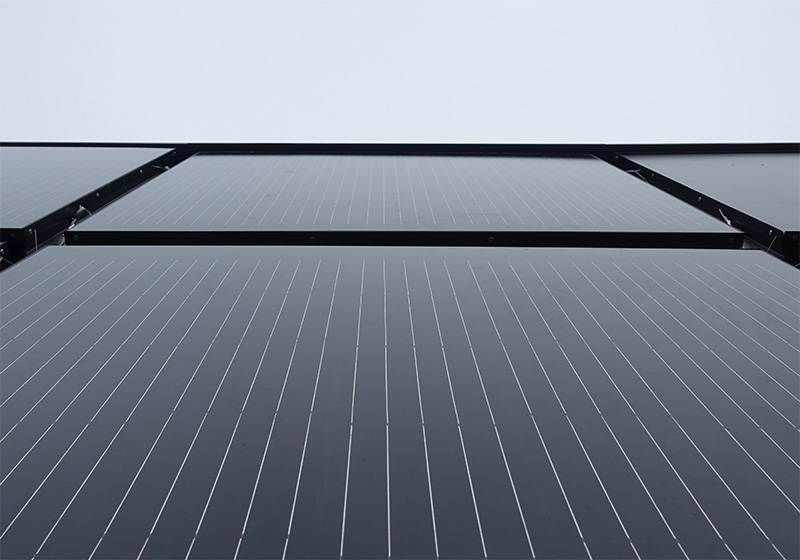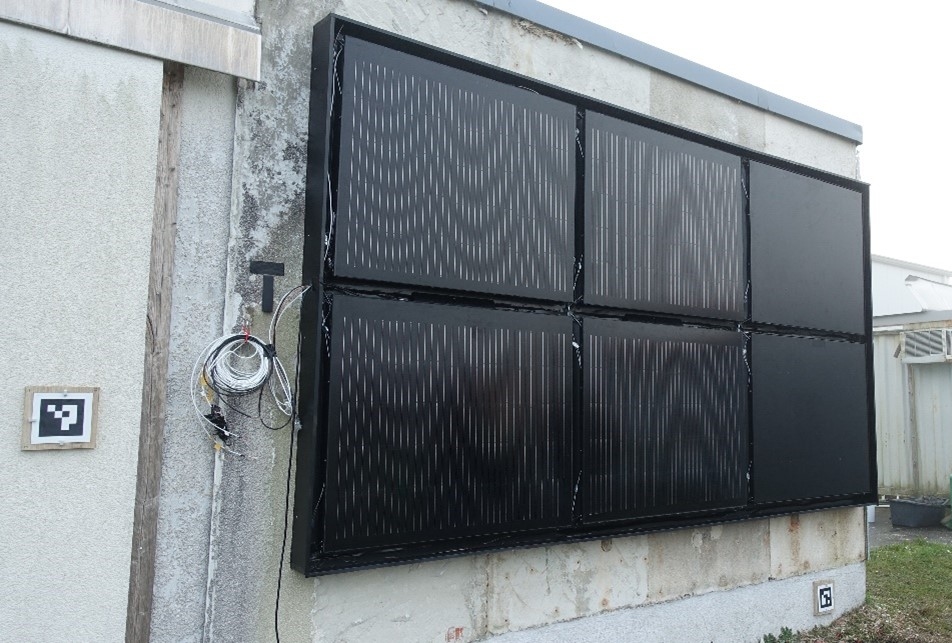Press Release #28
Quick to Install and Thermally Insulated BIPV Façade Element
Fraunhofer ISE and Fraunhofer UMSICHT have developed a prefabricated façade element with integrated photovoltaics for buildings that combines power generation, weather protection and thermal insulation. By eliminating the need for an additional substructure for the solar modules, this element can save large amounts of building materials, while speeding up installation during retrofits at the same time. Visitors to the BAU, the world's leading trade show held in Munich from January 13 to 17, 2025, can view two variants of the BIPV façade elements at the Fraunhofer Building Innovation Alliance's stand. The façade element was developed as part of the Fraunhofer flagship project "BAU-DNS".

The researchers at Fraunhofer ISE and Fraunhofer UMSICHT developed two versions of this façade element: The insulation material of one is made of hemp fibers and the second with a mushroom material. The size of both is 1.0 x 1.5 square meters. The insulation is inserted into the BIPV façade element in such a way that the individual components and materials can be reseparated at any time in the future.
"Both insulation materials are made from naturally renewable raw materials, making them CO2-neutral and circular," said Dr. Holger Wack, group manager for building materials development at Fraunhofer UMSICHT. "Both materials are suitable for use in façades and their fire behavior is compatible with building façade regulations. The mushroom material can also be produced from agricultural industry waste and is therefore especially resource efficient."

The façade system, developed by the research team, allows the individual BIPV façade elements to be dismantled independently of its adjacent elements. BIPV façades can therefore be implemented quickly and easily in building class 1 to 3 applications. By eliminating the need for a substructure, large amounts of materials are saved compared to classic constructions for BIPV elements with curtain-type, rear-ventilated façades.
The scientists installed the first prototypes, produced at Fraunhofer ISE, on a Fraunhofer IBP building in Holzkirchen at the end of October 2024. The PV façade elements are now undergoing intensive monitoring to test their electrical yield, durability, temperature, humidity and thermal insulation properties during operation in real world conditions.

"With this first demonstrator, we have already been able to confirm the ease of assembly without special aids like holding systems and the associated fast assembly speed of less than 1.5 hours per module," said Dr. Jan-Bleicke Eggers, team leader of Solar Building Envelope Technology at Fraunhofer ISE.
Future construction projects will be supported by a digital process description for the correct design of the BIPV system and for installation. Visitors to the BAU can also acquaint themselves with this at the upcoming BAU.
Last modified: